Milan- Travel guide for opera, classical music and culture
Milan: A travel guide for music fans
Visit destinations for classical music and opera art with a historical connection. Get to know exciting ideas and background information
1
LIFE AND WORK OF COMPOSERS IN MILAN
Read about the fates of famous artists in the opera capital of Italy.
1
2
CONCERT AND OPERA HOUSES IN MILAN
Read about Scala’s illustrious history.
2
3
CHURCHES
Even Mozart was there
3
4
MUSEUMS
The Museum of La Scala: a must for opera fans.
4
5
HOUSES AND APARTMENTS BY ARTISTS
Where Callas and Mozart lived
5
6
GRAVESITE OF FAMOUS MUSIC ARTISTS
The Cimitero Monumentale: Milan’s Monumental Cemetery. But the greatest of them all does not rest there
6
7
HOTELS, RESTAURANTS AND SPECIALITIES
Where to stay in the footsteps of Verdi, visit Callas’ favorite place and learn about a Milanese specialty
7
8
MUSICAL PIECES RELATING TO MILAN
How two famous operas failed in their premiere at La Scala
8
LIFE AND WORK OF COMPOSERS IN MILAN
Vincenzo Bellini
The collaboration with the librettist Romani
Milan was Vincenzo Bellini’s most important artistic station. The impresario Barbaja arranged the contact with the main librettist of La Scala, Felice Romani, who, with the exception of “I Puritani”, was to write all of Bellini’s subsequent libretti.
Felice Romani:
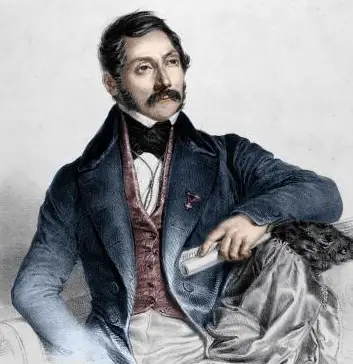
Triumph and defeat
The first opera “Il pirata” hit Milan like a bomb and Bellini wrote six operas for La Scala and the Carcano in the next 4 years. In Milan he also came into contact with 2 of the 3 Giudittas who played an important role in his life. On the one hand, it concerned the affair with the married Turina (which was blown up because of an intercepted letter) and, on the other hand, the artistic (and probably private) partnership with the famous Giuditta Pasta.
Bellini moved skillfully in the aristocratic Milanese salons and quickly created a network of relationships. However, this did not protect him from the greatest disgrace of his career, the scandalous premiere of his “Norma” at La Scala (more about this in the excursus at the end).
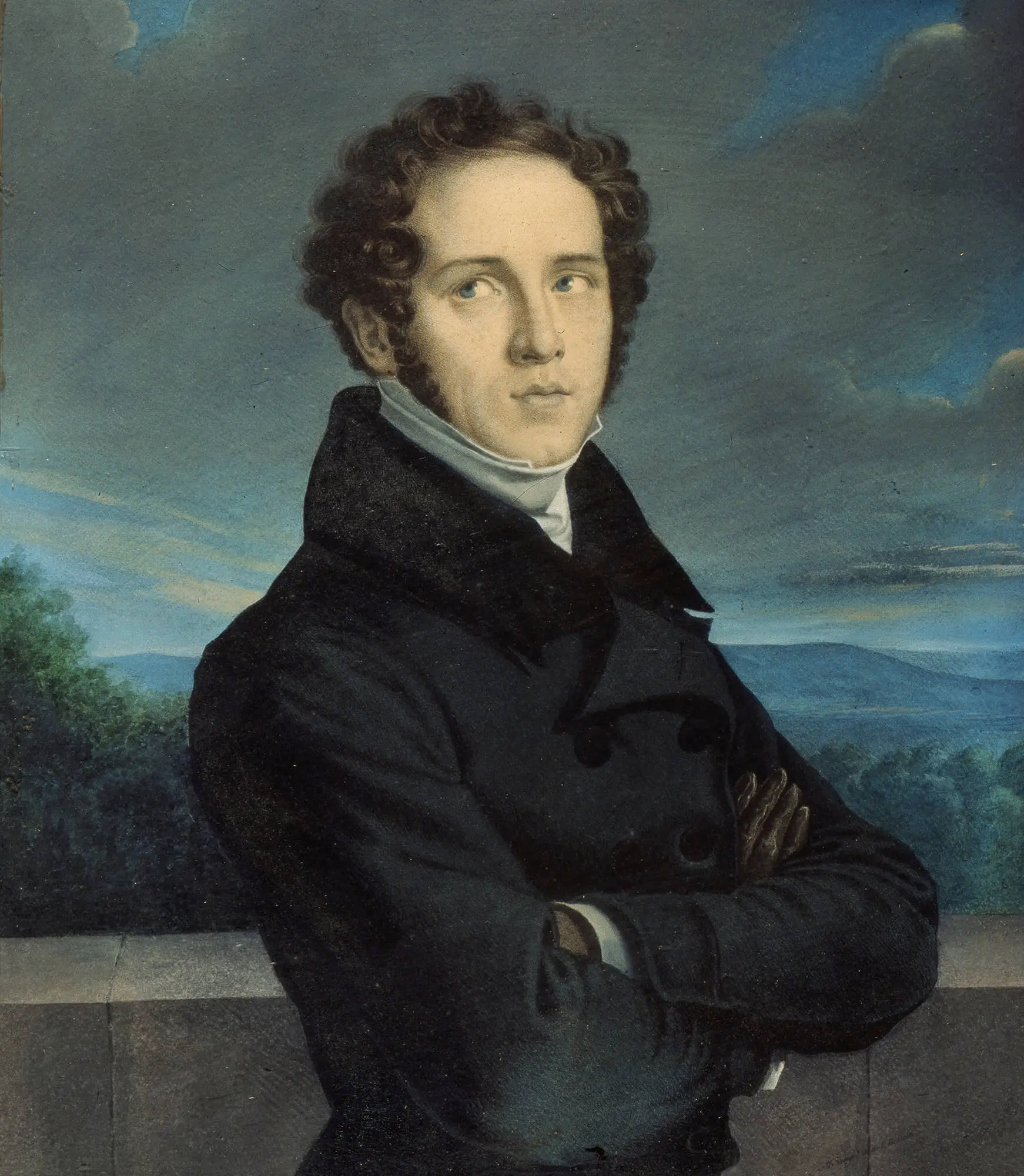
Maria Callas
Battle for the Queen’s Realm of La Scala
In 1950 Maria Callas had sung at La Scala for the first time and she became the “prima donna assoluta” of La Scala in the 1950s.
But she had to fight for this position. When she came to La Scala, Renata Tebaldi occupied this position, enthroned as the “angel’s voice” at the reopening of La Scala in 1946 by Toscanini. What followed was not only artistic competition but also personal animosity. Tebaldi captivated with her angelic voice, Callas with her dramatic expression and stupendous technique. The claques of the two singers did their part to fuel the rivalry. Eventually Callas gained the upper hand and Tebaldi focused on the Met, and so both singers got their queen realms.
Callas’ relationship with audiences and management was never free of tension, however; perhaps the magnitude of her importance was only realised in retrospect, for many of the greatest performances and most of the great recordings were made at La Scala. The last performance was in 1962, with over a decade of emotion in between.
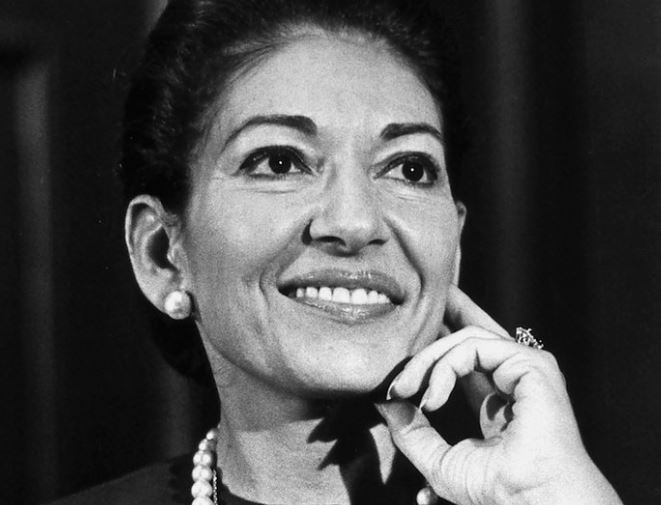
Gaetano Donizetti
Career kick in Milan
Milan played a minor role in Donizetti’s personal biography alongside Bergamo, Naples and Paris. And yet the northern Italian metropolis was decisive for the career of the Lombard. In 1830 his international career began there with the triumph of his first masterpiece “Anna Bolena” starring the dream couple Giuditta Patsa and Giovanni Rubini.
Two years later he presented himself to the Milan audience with “Elisir d’amore”. When the opera premiered on May 12, 1832, Donizetti experienced one of the most brilliant moments of his career. The ovations from the audience were gigantic, and the reviews in the newspapers were overwhelming. Donizetti thus brilliantly confirmed the success he had achieved with “Anna Bolena” two years earlier. Now he was finally on a par with his friend and rival Bellini, and the two became Italy’s leading opera composers.
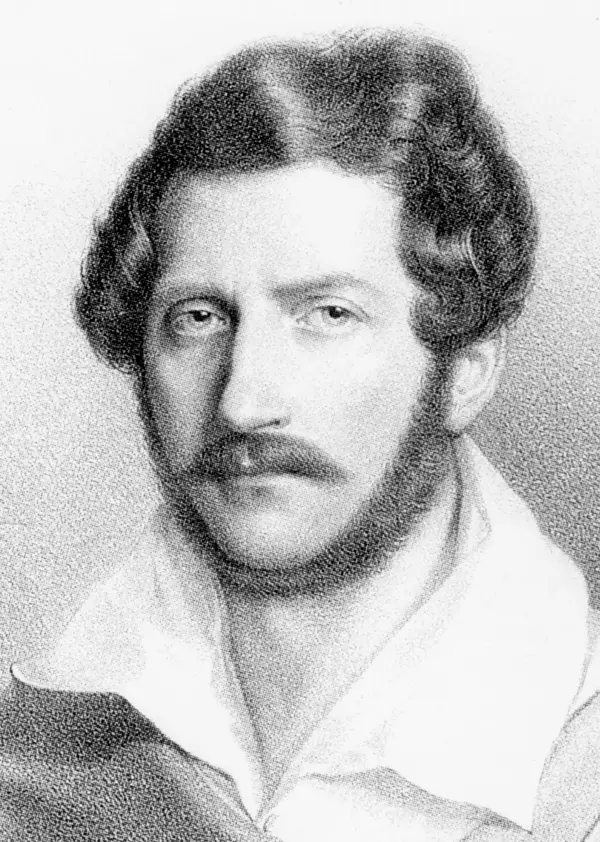
TO THE COMPLETE DONIZETTI BIOGRAPHY
Wolfgang Amadeus Mozart
Triumph as a 14-year-old with an opera
In January 1770, father and son Mozart arrive in Milan. After the hardships of crossing the Brenner Pass in snow and cold, the two hope for a lucrative commission.Mozart takes lessons from the old Sammartini and is allowed to perform in public several times. The commission arrives and Mozart receives a libretto for “Mitridate re di Ponte”.
In the autumn they return with the finished opera. The 14-year-old Mozart conducts the first three performances himself and the Milanese are over the moon, ensuring sold-out performances for months. Mozart returns twice more with operas for Milan (“Ascanio” and “Lucio Silla”) until Archbishop Colloredo in Salzburg stops the commissions. All three performances took place in the Pallazio Regio Ducal, which burned down three years after the premiere of “Lucio Silla”. Next stop on the Italy tour is Bologna.
TO THE COMPLETE MOZART BIOGRAPHY
The 14-years-old Mozart:
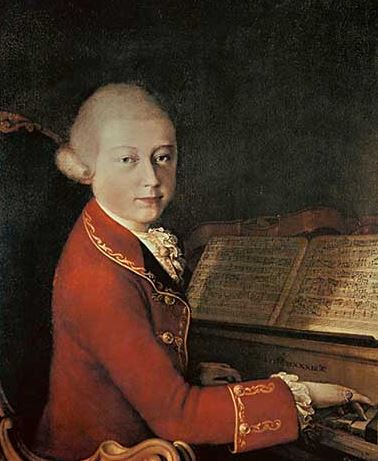
Giacomo Puccini
Many points of contact with Milan
Two successful premieres in Milan frame Puccini’s artistic life. First the one-act opera “Le Vili” at the Teatro Verme in 1884 and 40 years later the posthumous premiere of “Turandot” at La Scala. Both performances were successes, the former the respect success of the newcomer and the latter the homage to the monument of Puccini, who with Turandot had given birth to his last giant. In between, however, Puccini had more than once quarreled with Milan, more precisely with La Scala, see also the digression on the premiere of “Butterfly” at La Scala below.
For him, Milan also meant the mouse-poor student years at the Milan Conservatory, where he shared a room with Pietro Mascagni, among others. He recalled these years fondly in “La Bohème.” As a composer, Milan was also important to him because it was home to the branch of his publisher Ricordi, with whom he had completed all but one of his opera projects (La Rondine).[/sc_fs_faq]
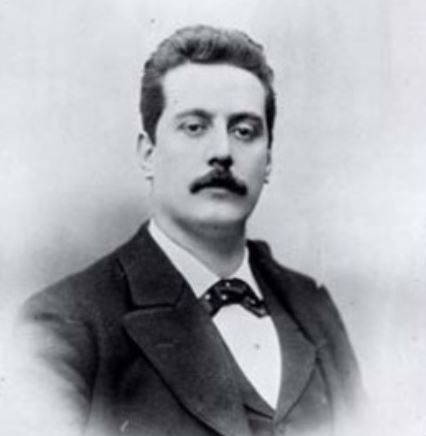
TO THE COMPLETE PUCCINI BIOGRAPHY
Gioachino Rossini
Successful works between the ages of 18 and 25.
The years 1810-1820 were Rossini’s galley years, during which he wrote over 30 works for a dozen theaters. Yet in Rossini’s biography, Milan was overshadowed by Naples, Bologna and Paris. Nevertheless, the Lombard capital saw the premieres of half a dozen of Rossini’s works, including “Gazza ladra” and “Il turco in Italia.”
The famous partnership with Barbaja
Rossini met Domenico Barbaja there, who was in charge of the “entertainment center” at La Scala. The Scala of Rossini’s time must be imagined somewhat differently than we are used to nowadays. While the music was important, the social aspect of a visit was at least as important. Scala also included a café, a pastry shop, a kitchen, and game rooms. The resourceful Domenico Barbaja was responsible for the latter. With the French coming to power during the Napoleonic years, gambling was legalized and Barbaja turned La Scala into an entertainment center with music, gastronomy and gambling.[/sc_fs_faq]
TO THE FULL ROSSINI BIOGRAPHY
The young Rossini:
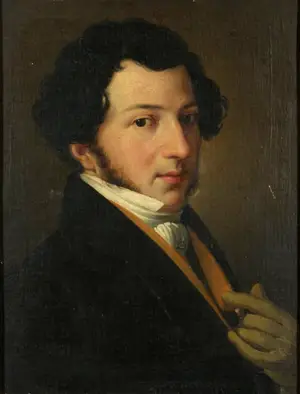
Giuseppe Verdi
A lifelong relationship with La Scala
Throughout his life, La Scala in Milan was Verdi’s most important artistic reference point. The premiere of his first opera (Oberto) took place in this theater in 1839, and 54 years later also that of his last opera (Falstaff). In addition, the offices of his lifelong publisher Ricordi were located in Milan.
His career really took off at this theater with the sensational success of “Nabucco” in 1843, whereupon the impresario Merelli offered Verdi a contract for a follow-up work. The contract was completely worked out, with only a gap in the compensation sum. Merelli, the impresario of La Scala, asked the composer to insert the sum he liked himself.
Verdi in front of La Scala:
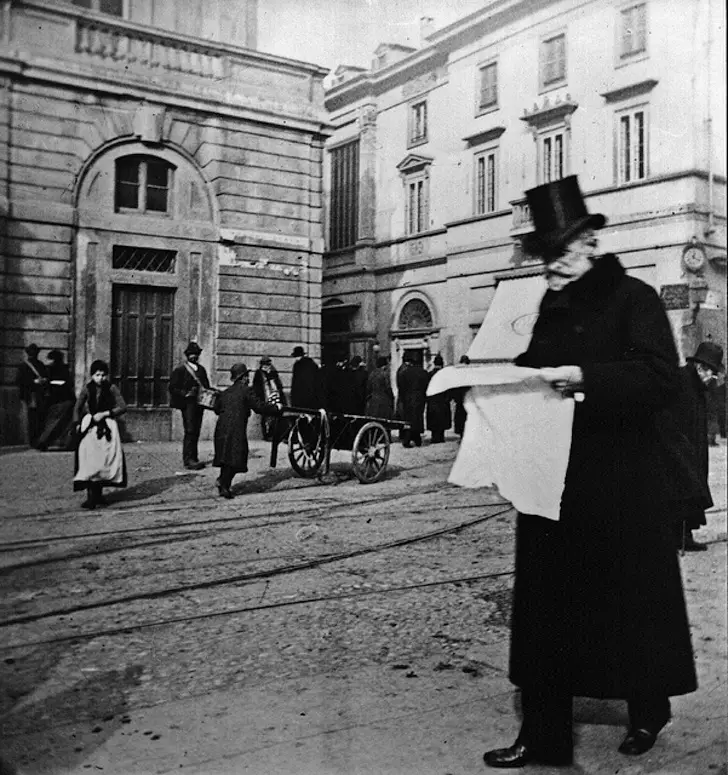
Death and funeral in Milan
After his wife Giuseppina died in 1897, Verdi often spent his remaining time in his suite at the Albergo Milano (now the Gran Hotel), where he died in his room in 1901. Modestly, according to his wishes, his body was taken to the cemetery for burial in a III class carriage. It was not until three weeks later that his body was transferred to the crypt of the Casa di riposo with the enormous participation of the Milanese population, accompanied by the singing of the estimated 300,000 people along the route who spontaneously sang “Va pensiero”. His death suite at the Gran Hotel has been preserved to this day and can be booked.
LINK TO THE COMPLETE VERDI BIOGRAPHY
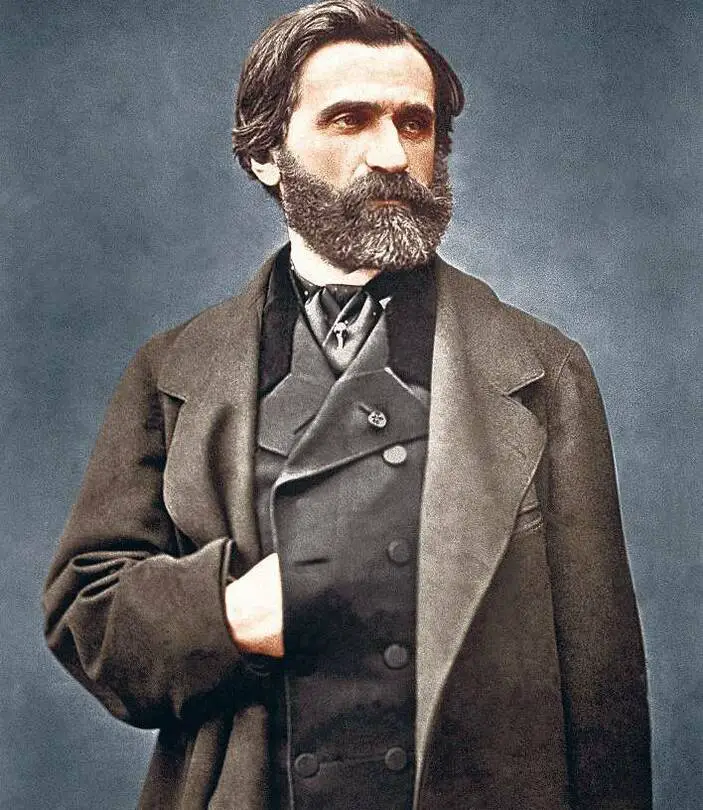
OPERA HOUSES IN MILAN
Vincenzo Bellini
The collaboration with the librettist Romani
Milan was Vincenzo Bellini’s most important artistic station. The impresario Barbaja arranged the contact with the main librettist of La Scala, Felice Romani, who, with the exception of “I Puritani”, was to write all of Bellini’s subsequent libretti.
Felice Romani:

Triumph and defeat
The first opera “Il pirata” hit Milan like a bomb and Bellini wrote six operas for La Scala and the Carcano in the next 4 years. In Milan he also came into contact with 2 of the 3 Giudittas who played an important role in his life. On the one hand, it concerned the affair with the married Turina (which was blown up because of an intercepted letter) and, on the other hand, the artistic (and probably private) partnership with the famous Giuditta Pasta.
Bellini moved skillfully in the aristocratic Milanese salons and quickly created a network of relationships. However, this did not protect him from the greatest disgrace of his career, the scandalous premiere of his “Norma” at La Scala (more about this in the excursus at the end).

Maria Callas
Battle for the Queen’s Realm of La Scala
In 1950 Maria Callas had sung at La Scala for the first time and she became the “prima donna assoluta” of La Scala in the 1950s.
But she had to fight for this position. When she came to La Scala, Renata Tebaldi occupied this position, enthroned as the “angel’s voice” at the reopening of La Scala in 1946 by Toscanini. What followed was not only artistic competition but also personal animosity. Tebaldi captivated with her angelic voice, Callas with her dramatic expression and stupendous technique. The claques of the two singers did their part to fuel the rivalry. Eventually Callas gained the upper hand and Tebaldi focused on the Met, and so both singers got their queen realms.
Callas’ relationship with audiences and management was never free of tension, however; perhaps the magnitude of her importance was only realised in retrospect, for many of the greatest performances and most of the great recordings were made at La Scala. The last performance was in 1962, with over a decade of emotion in between.

Gaetano Donizetti
Career kick in Milan
Milan played a minor role in Donizetti’s personal biography alongside Bergamo, Naples and Paris. And yet the northern Italian metropolis was decisive for the career of the Lombard. In 1830 his international career began there with the triumph of his first masterpiece “Anna Bolena” starring the dream couple Giuditta Patsa and Giovanni Rubini.
Two years later he presented himself to the Milan audience with “Elisir d’amore”. When the opera premiered on May 12, 1832, Donizetti experienced one of the most brilliant moments of his career. The ovations from the audience were gigantic, and the reviews in the newspapers were overwhelming. Donizetti thus brilliantly confirmed the success he had achieved with “Anna Bolena” two years earlier. Now he was finally on a par with his friend and rival Bellini, and the two became Italy’s leading opera composers.

TO THE COMPLETE DONIZETTI BIOGRAPHY
Wolfgang Amadeus Mozart
Triumph as a 14-year-old with an opera
In January 1770, father and son Mozart arrive in Milan. After the hardships of crossing the Brenner Pass in snow and cold, the two hope for a lucrative commission.Mozart takes lessons from the old Sammartini and is allowed to perform in public several times. The commission arrives and Mozart receives a libretto for “Mitridate re di Ponte”.
In the autumn they return with the finished opera. The 14-year-old Mozart conducts the first three performances himself and the Milanese are over the moon, ensuring sold-out performances for months. Mozart returns twice more with operas for Milan (“Ascanio” and “Lucio Silla”) until Archbishop Colloredo in Salzburg stops the commissions. All three performances took place in the Pallazio Regio Ducal, which burned down three years after the premiere of “Lucio Silla”. Next stop on the Italy tour is Bologna.
TO THE COMPLETE MOZART BIOGRAPHY
The 14-years-old Mozart:

Giacomo Puccini
Many points of contact with Milan
Two successful premieres in Milan frame Puccini’s artistic life. First the one-act opera “Le Vili” at the Teatro Verme in 1884 and 40 years later the posthumous premiere of “Turandot” at La Scala. Both performances were successes, the former the respect success of the newcomer and the latter the homage to the monument of Puccini, who with Turandot had given birth to his last giant. In between, however, Puccini had more than once quarreled with Milan, more precisely with La Scala, see also the digression on the premiere of “Butterfly” at La Scala below.
For him, Milan also meant the mouse-poor student years at the Milan Conservatory, where he shared a room with Pietro Mascagni, among others. He recalled these years fondly in “La Bohème.” As a composer, Milan was also important to him because it was home to the branch of his publisher Ricordi, with whom he had completed all but one of his opera projects (La Rondine).[/sc_fs_faq]

TO THE COMPLETE PUCCINI BIOGRAPHY
Gioachino Rossini
Successful works between the ages of 18 and 25.
The years 1810-1820 were Rossini’s galley years, during which he wrote over 30 works for a dozen theaters. Yet in Rossini’s biography, Milan was overshadowed by Naples, Bologna and Paris. Nevertheless, the Lombard capital saw the premieres of half a dozen of Rossini’s works, including “Gazza ladra” and “Il turco in Italia.”
The famous partnership with Barbaja
Rossini met Domenico Barbaja there, who was in charge of the “entertainment center” at La Scala. The Scala of Rossini’s time must be imagined somewhat differently than we are used to nowadays. While the music was important, the social aspect of a visit was at least as important. Scala also included a café, a pastry shop, a kitchen, and game rooms. The resourceful Domenico Barbaja was responsible for the latter. With the French coming to power during the Napoleonic years, gambling was legalized and Barbaja turned La Scala into an entertainment center with music, gastronomy and gambling.[/sc_fs_faq]
TO THE FULL ROSSINI BIOGRAPHY
The young Rossini:

Giuseppe Verdi
A lifelong relationship with La Scala
Throughout his life, La Scala in Milan was Verdi’s most important artistic reference point. The premiere of his first opera (Oberto) took place in this theater in 1839, and 54 years later also that of his last opera (Falstaff). In addition, the offices of his lifelong publisher Ricordi were located in Milan.
His career really took off at this theater with the sensational success of “Nabucco” in 1843, whereupon the impresario Merelli offered Verdi a contract for a follow-up work. The contract was completely worked out, with only a gap in the compensation sum. Merelli, the impresario of La Scala, asked the composer to insert the sum he liked himself.
Verdi in front of La Scala:

Death and funeral in Milan
After his wife Giuseppina died in 1897, Verdi often spent his remaining time in his suite at the Albergo Milano (now the Gran Hotel), where he died in his room in 1901. Modestly, according to his wishes, his body was taken to the cemetery for burial in a III class carriage. It was not until three weeks later that his body was transferred to the crypt of the Casa di riposo with the enormous participation of the Milanese population, accompanied by the singing of the estimated 300,000 people along the route who spontaneously sang “Va pensiero”. His death suite at the Gran Hotel has been preserved to this day and can be booked.
LINK TO THE COMPLETE VERDI BIOGRAPHY

CHURCHES
Vincenzo Bellini
The collaboration with the librettist Romani
Milan was Vincenzo Bellini’s most important artistic station. The impresario Barbaja arranged the contact with the main librettist of La Scala, Felice Romani, who, with the exception of “I Puritani”, was to write all of Bellini’s subsequent libretti.
Felice Romani:

Triumph and defeat
The first opera “Il pirata” hit Milan like a bomb and Bellini wrote six operas for La Scala and the Carcano in the next 4 years. In Milan he also came into contact with 2 of the 3 Giudittas who played an important role in his life. On the one hand, it concerned the affair with the married Turina (which was blown up because of an intercepted letter) and, on the other hand, the artistic (and probably private) partnership with the famous Giuditta Pasta.
Bellini moved skillfully in the aristocratic Milanese salons and quickly created a network of relationships. However, this did not protect him from the greatest disgrace of his career, the scandalous premiere of his “Norma” at La Scala (more about this in the excursus at the end).

Maria Callas
Battle for the Queen’s Realm of La Scala
In 1950 Maria Callas had sung at La Scala for the first time and she became the “prima donna assoluta” of La Scala in the 1950s.
But she had to fight for this position. When she came to La Scala, Renata Tebaldi occupied this position, enthroned as the “angel’s voice” at the reopening of La Scala in 1946 by Toscanini. What followed was not only artistic competition but also personal animosity. Tebaldi captivated with her angelic voice, Callas with her dramatic expression and stupendous technique. The claques of the two singers did their part to fuel the rivalry. Eventually Callas gained the upper hand and Tebaldi focused on the Met, and so both singers got their queen realms.
Callas’ relationship with audiences and management was never free of tension, however; perhaps the magnitude of her importance was only realised in retrospect, for many of the greatest performances and most of the great recordings were made at La Scala. The last performance was in 1962, with over a decade of emotion in between.

Gaetano Donizetti
Career kick in Milan
Milan played a minor role in Donizetti’s personal biography alongside Bergamo, Naples and Paris. And yet the northern Italian metropolis was decisive for the career of the Lombard. In 1830 his international career began there with the triumph of his first masterpiece “Anna Bolena” starring the dream couple Giuditta Patsa and Giovanni Rubini.
Two years later he presented himself to the Milan audience with “Elisir d’amore”. When the opera premiered on May 12, 1832, Donizetti experienced one of the most brilliant moments of his career. The ovations from the audience were gigantic, and the reviews in the newspapers were overwhelming. Donizetti thus brilliantly confirmed the success he had achieved with “Anna Bolena” two years earlier. Now he was finally on a par with his friend and rival Bellini, and the two became Italy’s leading opera composers.

TO THE COMPLETE DONIZETTI BIOGRAPHY
Wolfgang Amadeus Mozart
Triumph as a 14-year-old with an opera
In January 1770, father and son Mozart arrive in Milan. After the hardships of crossing the Brenner Pass in snow and cold, the two hope for a lucrative commission.Mozart takes lessons from the old Sammartini and is allowed to perform in public several times. The commission arrives and Mozart receives a libretto for “Mitridate re di Ponte”.
In the autumn they return with the finished opera. The 14-year-old Mozart conducts the first three performances himself and the Milanese are over the moon, ensuring sold-out performances for months. Mozart returns twice more with operas for Milan (“Ascanio” and “Lucio Silla”) until Archbishop Colloredo in Salzburg stops the commissions. All three performances took place in the Pallazio Regio Ducal, which burned down three years after the premiere of “Lucio Silla”. Next stop on the Italy tour is Bologna.
TO THE COMPLETE MOZART BIOGRAPHY
The 14-years-old Mozart:

Giacomo Puccini
Many points of contact with Milan
Two successful premieres in Milan frame Puccini’s artistic life. First the one-act opera “Le Vili” at the Teatro Verme in 1884 and 40 years later the posthumous premiere of “Turandot” at La Scala. Both performances were successes, the former the respect success of the newcomer and the latter the homage to the monument of Puccini, who with Turandot had given birth to his last giant. In between, however, Puccini had more than once quarreled with Milan, more precisely with La Scala, see also the digression on the premiere of “Butterfly” at La Scala below.
For him, Milan also meant the mouse-poor student years at the Milan Conservatory, where he shared a room with Pietro Mascagni, among others. He recalled these years fondly in “La Bohème.” As a composer, Milan was also important to him because it was home to the branch of his publisher Ricordi, with whom he had completed all but one of his opera projects (La Rondine).[/sc_fs_faq]

TO THE COMPLETE PUCCINI BIOGRAPHY
Gioachino Rossini
Successful works between the ages of 18 and 25.
The years 1810-1820 were Rossini’s galley years, during which he wrote over 30 works for a dozen theaters. Yet in Rossini’s biography, Milan was overshadowed by Naples, Bologna and Paris. Nevertheless, the Lombard capital saw the premieres of half a dozen of Rossini’s works, including “Gazza ladra” and “Il turco in Italia.”
The famous partnership with Barbaja
Rossini met Domenico Barbaja there, who was in charge of the “entertainment center” at La Scala. The Scala of Rossini’s time must be imagined somewhat differently than we are used to nowadays. While the music was important, the social aspect of a visit was at least as important. Scala also included a café, a pastry shop, a kitchen, and game rooms. The resourceful Domenico Barbaja was responsible for the latter. With the French coming to power during the Napoleonic years, gambling was legalized and Barbaja turned La Scala into an entertainment center with music, gastronomy and gambling.[/sc_fs_faq]
TO THE FULL ROSSINI BIOGRAPHY
The young Rossini:

Giuseppe Verdi
A lifelong relationship with La Scala
Throughout his life, La Scala in Milan was Verdi’s most important artistic reference point. The premiere of his first opera (Oberto) took place in this theater in 1839, and 54 years later also that of his last opera (Falstaff). In addition, the offices of his lifelong publisher Ricordi were located in Milan.
His career really took off at this theater with the sensational success of “Nabucco” in 1843, whereupon the impresario Merelli offered Verdi a contract for a follow-up work. The contract was completely worked out, with only a gap in the compensation sum. Merelli, the impresario of La Scala, asked the composer to insert the sum he liked himself.
Verdi in front of La Scala:

Death and funeral in Milan
After his wife Giuseppina died in 1897, Verdi often spent his remaining time in his suite at the Albergo Milano (now the Gran Hotel), where he died in his room in 1901. Modestly, according to his wishes, his body was taken to the cemetery for burial in a III class carriage. It was not until three weeks later that his body was transferred to the crypt of the Casa di riposo with the enormous participation of the Milanese population, accompanied by the singing of the estimated 300,000 people along the route who spontaneously sang “Va pensiero”. His death suite at the Gran Hotel has been preserved to this day and can be booked.
LINK TO THE COMPLETE VERDI BIOGRAPHY

MUSEUMS
Vincenzo Bellini
The collaboration with the librettist Romani
Milan was Vincenzo Bellini’s most important artistic station. The impresario Barbaja arranged the contact with the main librettist of La Scala, Felice Romani, who, with the exception of “I Puritani”, was to write all of Bellini’s subsequent libretti.
Felice Romani:

Triumph and defeat
The first opera “Il pirata” hit Milan like a bomb and Bellini wrote six operas for La Scala and the Carcano in the next 4 years. In Milan he also came into contact with 2 of the 3 Giudittas who played an important role in his life. On the one hand, it concerned the affair with the married Turina (which was blown up because of an intercepted letter) and, on the other hand, the artistic (and probably private) partnership with the famous Giuditta Pasta.
Bellini moved skillfully in the aristocratic Milanese salons and quickly created a network of relationships. However, this did not protect him from the greatest disgrace of his career, the scandalous premiere of his “Norma” at La Scala (more about this in the excursus at the end).

Maria Callas
Battle for the Queen’s Realm of La Scala
In 1950 Maria Callas had sung at La Scala for the first time and she became the “prima donna assoluta” of La Scala in the 1950s.
But she had to fight for this position. When she came to La Scala, Renata Tebaldi occupied this position, enthroned as the “angel’s voice” at the reopening of La Scala in 1946 by Toscanini. What followed was not only artistic competition but also personal animosity. Tebaldi captivated with her angelic voice, Callas with her dramatic expression and stupendous technique. The claques of the two singers did their part to fuel the rivalry. Eventually Callas gained the upper hand and Tebaldi focused on the Met, and so both singers got their queen realms.
Callas’ relationship with audiences and management was never free of tension, however; perhaps the magnitude of her importance was only realised in retrospect, for many of the greatest performances and most of the great recordings were made at La Scala. The last performance was in 1962, with over a decade of emotion in between.

Gaetano Donizetti
Career kick in Milan
Milan played a minor role in Donizetti’s personal biography alongside Bergamo, Naples and Paris. And yet the northern Italian metropolis was decisive for the career of the Lombard. In 1830 his international career began there with the triumph of his first masterpiece “Anna Bolena” starring the dream couple Giuditta Patsa and Giovanni Rubini.
Two years later he presented himself to the Milan audience with “Elisir d’amore”. When the opera premiered on May 12, 1832, Donizetti experienced one of the most brilliant moments of his career. The ovations from the audience were gigantic, and the reviews in the newspapers were overwhelming. Donizetti thus brilliantly confirmed the success he had achieved with “Anna Bolena” two years earlier. Now he was finally on a par with his friend and rival Bellini, and the two became Italy’s leading opera composers.

TO THE COMPLETE DONIZETTI BIOGRAPHY
Wolfgang Amadeus Mozart
Triumph as a 14-year-old with an opera
In January 1770, father and son Mozart arrive in Milan. After the hardships of crossing the Brenner Pass in snow and cold, the two hope for a lucrative commission.Mozart takes lessons from the old Sammartini and is allowed to perform in public several times. The commission arrives and Mozart receives a libretto for “Mitridate re di Ponte”.
In the autumn they return with the finished opera. The 14-year-old Mozart conducts the first three performances himself and the Milanese are over the moon, ensuring sold-out performances for months. Mozart returns twice more with operas for Milan (“Ascanio” and “Lucio Silla”) until Archbishop Colloredo in Salzburg stops the commissions. All three performances took place in the Pallazio Regio Ducal, which burned down three years after the premiere of “Lucio Silla”. Next stop on the Italy tour is Bologna.
TO THE COMPLETE MOZART BIOGRAPHY
The 14-years-old Mozart:

Giacomo Puccini
Many points of contact with Milan
Two successful premieres in Milan frame Puccini’s artistic life. First the one-act opera “Le Vili” at the Teatro Verme in 1884 and 40 years later the posthumous premiere of “Turandot” at La Scala. Both performances were successes, the former the respect success of the newcomer and the latter the homage to the monument of Puccini, who with Turandot had given birth to his last giant. In between, however, Puccini had more than once quarreled with Milan, more precisely with La Scala, see also the digression on the premiere of “Butterfly” at La Scala below.
For him, Milan also meant the mouse-poor student years at the Milan Conservatory, where he shared a room with Pietro Mascagni, among others. He recalled these years fondly in “La Bohème.” As a composer, Milan was also important to him because it was home to the branch of his publisher Ricordi, with whom he had completed all but one of his opera projects (La Rondine).[/sc_fs_faq]

TO THE COMPLETE PUCCINI BIOGRAPHY
Gioachino Rossini
Successful works between the ages of 18 and 25.
The years 1810-1820 were Rossini’s galley years, during which he wrote over 30 works for a dozen theaters. Yet in Rossini’s biography, Milan was overshadowed by Naples, Bologna and Paris. Nevertheless, the Lombard capital saw the premieres of half a dozen of Rossini’s works, including “Gazza ladra” and “Il turco in Italia.”
The famous partnership with Barbaja
Rossini met Domenico Barbaja there, who was in charge of the “entertainment center” at La Scala. The Scala of Rossini’s time must be imagined somewhat differently than we are used to nowadays. While the music was important, the social aspect of a visit was at least as important. Scala also included a café, a pastry shop, a kitchen, and game rooms. The resourceful Domenico Barbaja was responsible for the latter. With the French coming to power during the Napoleonic years, gambling was legalized and Barbaja turned La Scala into an entertainment center with music, gastronomy and gambling.[/sc_fs_faq]
TO THE FULL ROSSINI BIOGRAPHY
The young Rossini:

Giuseppe Verdi
A lifelong relationship with La Scala
Throughout his life, La Scala in Milan was Verdi’s most important artistic reference point. The premiere of his first opera (Oberto) took place in this theater in 1839, and 54 years later also that of his last opera (Falstaff). In addition, the offices of his lifelong publisher Ricordi were located in Milan.
His career really took off at this theater with the sensational success of “Nabucco” in 1843, whereupon the impresario Merelli offered Verdi a contract for a follow-up work. The contract was completely worked out, with only a gap in the compensation sum. Merelli, the impresario of La Scala, asked the composer to insert the sum he liked himself.
Verdi in front of La Scala:

Death and funeral in Milan
After his wife Giuseppina died in 1897, Verdi often spent his remaining time in his suite at the Albergo Milano (now the Gran Hotel), where he died in his room in 1901. Modestly, according to his wishes, his body was taken to the cemetery for burial in a III class carriage. It was not until three weeks later that his body was transferred to the crypt of the Casa di riposo with the enormous participation of the Milanese population, accompanied by the singing of the estimated 300,000 people along the route who spontaneously sang “Va pensiero”. His death suite at the Gran Hotel has been preserved to this day and can be booked.
LINK TO THE COMPLETE VERDI BIOGRAPHY

HOUSES AND APARTEMENTS
Vincenzo Bellini
The collaboration with the librettist Romani
Milan was Vincenzo Bellini’s most important artistic station. The impresario Barbaja arranged the contact with the main librettist of La Scala, Felice Romani, who, with the exception of “I Puritani”, was to write all of Bellini’s subsequent libretti.
Felice Romani:

Triumph and defeat
The first opera “Il pirata” hit Milan like a bomb and Bellini wrote six operas for La Scala and the Carcano in the next 4 years. In Milan he also came into contact with 2 of the 3 Giudittas who played an important role in his life. On the one hand, it concerned the affair with the married Turina (which was blown up because of an intercepted letter) and, on the other hand, the artistic (and probably private) partnership with the famous Giuditta Pasta.
Bellini moved skillfully in the aristocratic Milanese salons and quickly created a network of relationships. However, this did not protect him from the greatest disgrace of his career, the scandalous premiere of his “Norma” at La Scala (more about this in the excursus at the end).

Maria Callas
Battle for the Queen’s Realm of La Scala
In 1950 Maria Callas had sung at La Scala for the first time and she became the “prima donna assoluta” of La Scala in the 1950s.
But she had to fight for this position. When she came to La Scala, Renata Tebaldi occupied this position, enthroned as the “angel’s voice” at the reopening of La Scala in 1946 by Toscanini. What followed was not only artistic competition but also personal animosity. Tebaldi captivated with her angelic voice, Callas with her dramatic expression and stupendous technique. The claques of the two singers did their part to fuel the rivalry. Eventually Callas gained the upper hand and Tebaldi focused on the Met, and so both singers got their queen realms.
Callas’ relationship with audiences and management was never free of tension, however; perhaps the magnitude of her importance was only realised in retrospect, for many of the greatest performances and most of the great recordings were made at La Scala. The last performance was in 1962, with over a decade of emotion in between.

Gaetano Donizetti
Career kick in Milan
Milan played a minor role in Donizetti’s personal biography alongside Bergamo, Naples and Paris. And yet the northern Italian metropolis was decisive for the career of the Lombard. In 1830 his international career began there with the triumph of his first masterpiece “Anna Bolena” starring the dream couple Giuditta Patsa and Giovanni Rubini.
Two years later he presented himself to the Milan audience with “Elisir d’amore”. When the opera premiered on May 12, 1832, Donizetti experienced one of the most brilliant moments of his career. The ovations from the audience were gigantic, and the reviews in the newspapers were overwhelming. Donizetti thus brilliantly confirmed the success he had achieved with “Anna Bolena” two years earlier. Now he was finally on a par with his friend and rival Bellini, and the two became Italy’s leading opera composers.

TO THE COMPLETE DONIZETTI BIOGRAPHY
Wolfgang Amadeus Mozart
Triumph as a 14-year-old with an opera
In January 1770, father and son Mozart arrive in Milan. After the hardships of crossing the Brenner Pass in snow and cold, the two hope for a lucrative commission.Mozart takes lessons from the old Sammartini and is allowed to perform in public several times. The commission arrives and Mozart receives a libretto for “Mitridate re di Ponte”.
In the autumn they return with the finished opera. The 14-year-old Mozart conducts the first three performances himself and the Milanese are over the moon, ensuring sold-out performances for months. Mozart returns twice more with operas for Milan (“Ascanio” and “Lucio Silla”) until Archbishop Colloredo in Salzburg stops the commissions. All three performances took place in the Pallazio Regio Ducal, which burned down three years after the premiere of “Lucio Silla”. Next stop on the Italy tour is Bologna.
TO THE COMPLETE MOZART BIOGRAPHY
The 14-years-old Mozart:

Giacomo Puccini
Many points of contact with Milan
Two successful premieres in Milan frame Puccini’s artistic life. First the one-act opera “Le Vili” at the Teatro Verme in 1884 and 40 years later the posthumous premiere of “Turandot” at La Scala. Both performances were successes, the former the respect success of the newcomer and the latter the homage to the monument of Puccini, who with Turandot had given birth to his last giant. In between, however, Puccini had more than once quarreled with Milan, more precisely with La Scala, see also the digression on the premiere of “Butterfly” at La Scala below.
For him, Milan also meant the mouse-poor student years at the Milan Conservatory, where he shared a room with Pietro Mascagni, among others. He recalled these years fondly in “La Bohème.” As a composer, Milan was also important to him because it was home to the branch of his publisher Ricordi, with whom he had completed all but one of his opera projects (La Rondine).[/sc_fs_faq]

TO THE COMPLETE PUCCINI BIOGRAPHY
Gioachino Rossini
Successful works between the ages of 18 and 25.
The years 1810-1820 were Rossini’s galley years, during which he wrote over 30 works for a dozen theaters. Yet in Rossini’s biography, Milan was overshadowed by Naples, Bologna and Paris. Nevertheless, the Lombard capital saw the premieres of half a dozen of Rossini’s works, including “Gazza ladra” and “Il turco in Italia.”
The famous partnership with Barbaja
Rossini met Domenico Barbaja there, who was in charge of the “entertainment center” at La Scala. The Scala of Rossini’s time must be imagined somewhat differently than we are used to nowadays. While the music was important, the social aspect of a visit was at least as important. Scala also included a café, a pastry shop, a kitchen, and game rooms. The resourceful Domenico Barbaja was responsible for the latter. With the French coming to power during the Napoleonic years, gambling was legalized and Barbaja turned La Scala into an entertainment center with music, gastronomy and gambling.[/sc_fs_faq]
TO THE FULL ROSSINI BIOGRAPHY
The young Rossini:

Giuseppe Verdi
A lifelong relationship with La Scala
Throughout his life, La Scala in Milan was Verdi’s most important artistic reference point. The premiere of his first opera (Oberto) took place in this theater in 1839, and 54 years later also that of his last opera (Falstaff). In addition, the offices of his lifelong publisher Ricordi were located in Milan.
His career really took off at this theater with the sensational success of “Nabucco” in 1843, whereupon the impresario Merelli offered Verdi a contract for a follow-up work. The contract was completely worked out, with only a gap in the compensation sum. Merelli, the impresario of La Scala, asked the composer to insert the sum he liked himself.
Verdi in front of La Scala:

Death and funeral in Milan
After his wife Giuseppina died in 1897, Verdi often spent his remaining time in his suite at the Albergo Milano (now the Gran Hotel), where he died in his room in 1901. Modestly, according to his wishes, his body was taken to the cemetery for burial in a III class carriage. It was not until three weeks later that his body was transferred to the crypt of the Casa di riposo with the enormous participation of the Milanese population, accompanied by the singing of the estimated 300,000 people along the route who spontaneously sang “Va pensiero”. His death suite at the Gran Hotel has been preserved to this day and can be booked.
LINK TO THE COMPLETE VERDI BIOGRAPHY

GRAVESITES OF FAMOUS MUSICIANS
Vincenzo Bellini
The collaboration with the librettist Romani
Milan was Vincenzo Bellini’s most important artistic station. The impresario Barbaja arranged the contact with the main librettist of La Scala, Felice Romani, who, with the exception of “I Puritani”, was to write all of Bellini’s subsequent libretti.
Felice Romani:

Triumph and defeat
The first opera “Il pirata” hit Milan like a bomb and Bellini wrote six operas for La Scala and the Carcano in the next 4 years. In Milan he also came into contact with 2 of the 3 Giudittas who played an important role in his life. On the one hand, it concerned the affair with the married Turina (which was blown up because of an intercepted letter) and, on the other hand, the artistic (and probably private) partnership with the famous Giuditta Pasta.
Bellini moved skillfully in the aristocratic Milanese salons and quickly created a network of relationships. However, this did not protect him from the greatest disgrace of his career, the scandalous premiere of his “Norma” at La Scala (more about this in the excursus at the end).

Maria Callas
Battle for the Queen’s Realm of La Scala
In 1950 Maria Callas had sung at La Scala for the first time and she became the “prima donna assoluta” of La Scala in the 1950s.
But she had to fight for this position. When she came to La Scala, Renata Tebaldi occupied this position, enthroned as the “angel’s voice” at the reopening of La Scala in 1946 by Toscanini. What followed was not only artistic competition but also personal animosity. Tebaldi captivated with her angelic voice, Callas with her dramatic expression and stupendous technique. The claques of the two singers did their part to fuel the rivalry. Eventually Callas gained the upper hand and Tebaldi focused on the Met, and so both singers got their queen realms.
Callas’ relationship with audiences and management was never free of tension, however; perhaps the magnitude of her importance was only realised in retrospect, for many of the greatest performances and most of the great recordings were made at La Scala. The last performance was in 1962, with over a decade of emotion in between.

Gaetano Donizetti
Career kick in Milan
Milan played a minor role in Donizetti’s personal biography alongside Bergamo, Naples and Paris. And yet the northern Italian metropolis was decisive for the career of the Lombard. In 1830 his international career began there with the triumph of his first masterpiece “Anna Bolena” starring the dream couple Giuditta Patsa and Giovanni Rubini.
Two years later he presented himself to the Milan audience with “Elisir d’amore”. When the opera premiered on May 12, 1832, Donizetti experienced one of the most brilliant moments of his career. The ovations from the audience were gigantic, and the reviews in the newspapers were overwhelming. Donizetti thus brilliantly confirmed the success he had achieved with “Anna Bolena” two years earlier. Now he was finally on a par with his friend and rival Bellini, and the two became Italy’s leading opera composers.

TO THE COMPLETE DONIZETTI BIOGRAPHY
Wolfgang Amadeus Mozart
Triumph as a 14-year-old with an opera
In January 1770, father and son Mozart arrive in Milan. After the hardships of crossing the Brenner Pass in snow and cold, the two hope for a lucrative commission.Mozart takes lessons from the old Sammartini and is allowed to perform in public several times. The commission arrives and Mozart receives a libretto for “Mitridate re di Ponte”.
In the autumn they return with the finished opera. The 14-year-old Mozart conducts the first three performances himself and the Milanese are over the moon, ensuring sold-out performances for months. Mozart returns twice more with operas for Milan (“Ascanio” and “Lucio Silla”) until Archbishop Colloredo in Salzburg stops the commissions. All three performances took place in the Pallazio Regio Ducal, which burned down three years after the premiere of “Lucio Silla”. Next stop on the Italy tour is Bologna.
TO THE COMPLETE MOZART BIOGRAPHY
The 14-years-old Mozart:

Giacomo Puccini
Many points of contact with Milan
Two successful premieres in Milan frame Puccini’s artistic life. First the one-act opera “Le Vili” at the Teatro Verme in 1884 and 40 years later the posthumous premiere of “Turandot” at La Scala. Both performances were successes, the former the respect success of the newcomer and the latter the homage to the monument of Puccini, who with Turandot had given birth to his last giant. In between, however, Puccini had more than once quarreled with Milan, more precisely with La Scala, see also the digression on the premiere of “Butterfly” at La Scala below.
For him, Milan also meant the mouse-poor student years at the Milan Conservatory, where he shared a room with Pietro Mascagni, among others. He recalled these years fondly in “La Bohème.” As a composer, Milan was also important to him because it was home to the branch of his publisher Ricordi, with whom he had completed all but one of his opera projects (La Rondine).[/sc_fs_faq]

TO THE COMPLETE PUCCINI BIOGRAPHY
Gioachino Rossini
Successful works between the ages of 18 and 25.
The years 1810-1820 were Rossini’s galley years, during which he wrote over 30 works for a dozen theaters. Yet in Rossini’s biography, Milan was overshadowed by Naples, Bologna and Paris. Nevertheless, the Lombard capital saw the premieres of half a dozen of Rossini’s works, including “Gazza ladra” and “Il turco in Italia.”
The famous partnership with Barbaja
Rossini met Domenico Barbaja there, who was in charge of the “entertainment center” at La Scala. The Scala of Rossini’s time must be imagined somewhat differently than we are used to nowadays. While the music was important, the social aspect of a visit was at least as important. Scala also included a café, a pastry shop, a kitchen, and game rooms. The resourceful Domenico Barbaja was responsible for the latter. With the French coming to power during the Napoleonic years, gambling was legalized and Barbaja turned La Scala into an entertainment center with music, gastronomy and gambling.[/sc_fs_faq]
TO THE FULL ROSSINI BIOGRAPHY
The young Rossini:

Giuseppe Verdi
A lifelong relationship with La Scala
Throughout his life, La Scala in Milan was Verdi’s most important artistic reference point. The premiere of his first opera (Oberto) took place in this theater in 1839, and 54 years later also that of his last opera (Falstaff). In addition, the offices of his lifelong publisher Ricordi were located in Milan.
His career really took off at this theater with the sensational success of “Nabucco” in 1843, whereupon the impresario Merelli offered Verdi a contract for a follow-up work. The contract was completely worked out, with only a gap in the compensation sum. Merelli, the impresario of La Scala, asked the composer to insert the sum he liked himself.
Verdi in front of La Scala:

Death and funeral in Milan
After his wife Giuseppina died in 1897, Verdi often spent his remaining time in his suite at the Albergo Milano (now the Gran Hotel), where he died in his room in 1901. Modestly, according to his wishes, his body was taken to the cemetery for burial in a III class carriage. It was not until three weeks later that his body was transferred to the crypt of the Casa di riposo with the enormous participation of the Milanese population, accompanied by the singing of the estimated 300,000 people along the route who spontaneously sang “Va pensiero”. His death suite at the Gran Hotel has been preserved to this day and can be booked.
LINK TO THE COMPLETE VERDI BIOGRAPHY

HOTELS, RESTAURANTS AND SPECIALITIES
Vincenzo Bellini
The collaboration with the librettist Romani
Milan was Vincenzo Bellini’s most important artistic station. The impresario Barbaja arranged the contact with the main librettist of La Scala, Felice Romani, who, with the exception of “I Puritani”, was to write all of Bellini’s subsequent libretti.
Felice Romani:

Triumph and defeat
The first opera “Il pirata” hit Milan like a bomb and Bellini wrote six operas for La Scala and the Carcano in the next 4 years. In Milan he also came into contact with 2 of the 3 Giudittas who played an important role in his life. On the one hand, it concerned the affair with the married Turina (which was blown up because of an intercepted letter) and, on the other hand, the artistic (and probably private) partnership with the famous Giuditta Pasta.
Bellini moved skillfully in the aristocratic Milanese salons and quickly created a network of relationships. However, this did not protect him from the greatest disgrace of his career, the scandalous premiere of his “Norma” at La Scala (more about this in the excursus at the end).

Maria Callas
Battle for the Queen’s Realm of La Scala
In 1950 Maria Callas had sung at La Scala for the first time and she became the “prima donna assoluta” of La Scala in the 1950s.
But she had to fight for this position. When she came to La Scala, Renata Tebaldi occupied this position, enthroned as the “angel’s voice” at the reopening of La Scala in 1946 by Toscanini. What followed was not only artistic competition but also personal animosity. Tebaldi captivated with her angelic voice, Callas with her dramatic expression and stupendous technique. The claques of the two singers did their part to fuel the rivalry. Eventually Callas gained the upper hand and Tebaldi focused on the Met, and so both singers got their queen realms.
Callas’ relationship with audiences and management was never free of tension, however; perhaps the magnitude of her importance was only realised in retrospect, for many of the greatest performances and most of the great recordings were made at La Scala. The last performance was in 1962, with over a decade of emotion in between.

Gaetano Donizetti
Career kick in Milan
Milan played a minor role in Donizetti’s personal biography alongside Bergamo, Naples and Paris. And yet the northern Italian metropolis was decisive for the career of the Lombard. In 1830 his international career began there with the triumph of his first masterpiece “Anna Bolena” starring the dream couple Giuditta Patsa and Giovanni Rubini.
Two years later he presented himself to the Milan audience with “Elisir d’amore”. When the opera premiered on May 12, 1832, Donizetti experienced one of the most brilliant moments of his career. The ovations from the audience were gigantic, and the reviews in the newspapers were overwhelming. Donizetti thus brilliantly confirmed the success he had achieved with “Anna Bolena” two years earlier. Now he was finally on a par with his friend and rival Bellini, and the two became Italy’s leading opera composers.

TO THE COMPLETE DONIZETTI BIOGRAPHY
Wolfgang Amadeus Mozart
Triumph as a 14-year-old with an opera
In January 1770, father and son Mozart arrive in Milan. After the hardships of crossing the Brenner Pass in snow and cold, the two hope for a lucrative commission.Mozart takes lessons from the old Sammartini and is allowed to perform in public several times. The commission arrives and Mozart receives a libretto for “Mitridate re di Ponte”.
In the autumn they return with the finished opera. The 14-year-old Mozart conducts the first three performances himself and the Milanese are over the moon, ensuring sold-out performances for months. Mozart returns twice more with operas for Milan (“Ascanio” and “Lucio Silla”) until Archbishop Colloredo in Salzburg stops the commissions. All three performances took place in the Pallazio Regio Ducal, which burned down three years after the premiere of “Lucio Silla”. Next stop on the Italy tour is Bologna.
TO THE COMPLETE MOZART BIOGRAPHY
The 14-years-old Mozart:

Giacomo Puccini
Many points of contact with Milan
Two successful premieres in Milan frame Puccini’s artistic life. First the one-act opera “Le Vili” at the Teatro Verme in 1884 and 40 years later the posthumous premiere of “Turandot” at La Scala. Both performances were successes, the former the respect success of the newcomer and the latter the homage to the monument of Puccini, who with Turandot had given birth to his last giant. In between, however, Puccini had more than once quarreled with Milan, more precisely with La Scala, see also the digression on the premiere of “Butterfly” at La Scala below.
For him, Milan also meant the mouse-poor student years at the Milan Conservatory, where he shared a room with Pietro Mascagni, among others. He recalled these years fondly in “La Bohème.” As a composer, Milan was also important to him because it was home to the branch of his publisher Ricordi, with whom he had completed all but one of his opera projects (La Rondine).[/sc_fs_faq]

TO THE COMPLETE PUCCINI BIOGRAPHY
Gioachino Rossini
Successful works between the ages of 18 and 25.
The years 1810-1820 were Rossini’s galley years, during which he wrote over 30 works for a dozen theaters. Yet in Rossini’s biography, Milan was overshadowed by Naples, Bologna and Paris. Nevertheless, the Lombard capital saw the premieres of half a dozen of Rossini’s works, including “Gazza ladra” and “Il turco in Italia.”
The famous partnership with Barbaja
Rossini met Domenico Barbaja there, who was in charge of the “entertainment center” at La Scala. The Scala of Rossini’s time must be imagined somewhat differently than we are used to nowadays. While the music was important, the social aspect of a visit was at least as important. Scala also included a café, a pastry shop, a kitchen, and game rooms. The resourceful Domenico Barbaja was responsible for the latter. With the French coming to power during the Napoleonic years, gambling was legalized and Barbaja turned La Scala into an entertainment center with music, gastronomy and gambling.[/sc_fs_faq]
TO THE FULL ROSSINI BIOGRAPHY
The young Rossini:

Giuseppe Verdi
A lifelong relationship with La Scala
Throughout his life, La Scala in Milan was Verdi’s most important artistic reference point. The premiere of his first opera (Oberto) took place in this theater in 1839, and 54 years later also that of his last opera (Falstaff). In addition, the offices of his lifelong publisher Ricordi were located in Milan.
His career really took off at this theater with the sensational success of “Nabucco” in 1843, whereupon the impresario Merelli offered Verdi a contract for a follow-up work. The contract was completely worked out, with only a gap in the compensation sum. Merelli, the impresario of La Scala, asked the composer to insert the sum he liked himself.
Verdi in front of La Scala:

Death and funeral in Milan
After his wife Giuseppina died in 1897, Verdi often spent his remaining time in his suite at the Albergo Milano (now the Gran Hotel), where he died in his room in 1901. Modestly, according to his wishes, his body was taken to the cemetery for burial in a III class carriage. It was not until three weeks later that his body was transferred to the crypt of the Casa di riposo with the enormous participation of the Milanese population, accompanied by the singing of the estimated 300,000 people along the route who spontaneously sang “Va pensiero”. His death suite at the Gran Hotel has been preserved to this day and can be booked.
LINK TO THE COMPLETE VERDI BIOGRAPHY

MUSICAL PIECES WITH REFERENCE TO MILAN
Vincenzo Bellini
The collaboration with the librettist Romani
Milan was Vincenzo Bellini’s most important artistic station. The impresario Barbaja arranged the contact with the main librettist of La Scala, Felice Romani, who, with the exception of “I Puritani”, was to write all of Bellini’s subsequent libretti.
Felice Romani:

Triumph and defeat
The first opera “Il pirata” hit Milan like a bomb and Bellini wrote six operas for La Scala and the Carcano in the next 4 years. In Milan he also came into contact with 2 of the 3 Giudittas who played an important role in his life. On the one hand, it concerned the affair with the married Turina (which was blown up because of an intercepted letter) and, on the other hand, the artistic (and probably private) partnership with the famous Giuditta Pasta.
Bellini moved skillfully in the aristocratic Milanese salons and quickly created a network of relationships. However, this did not protect him from the greatest disgrace of his career, the scandalous premiere of his “Norma” at La Scala (more about this in the excursus at the end).

Maria Callas
Battle for the Queen’s Realm of La Scala
In 1950 Maria Callas had sung at La Scala for the first time and she became the “prima donna assoluta” of La Scala in the 1950s.
But she had to fight for this position. When she came to La Scala, Renata Tebaldi occupied this position, enthroned as the “angel’s voice” at the reopening of La Scala in 1946 by Toscanini. What followed was not only artistic competition but also personal animosity. Tebaldi captivated with her angelic voice, Callas with her dramatic expression and stupendous technique. The claques of the two singers did their part to fuel the rivalry. Eventually Callas gained the upper hand and Tebaldi focused on the Met, and so both singers got their queen realms.
Callas’ relationship with audiences and management was never free of tension, however; perhaps the magnitude of her importance was only realised in retrospect, for many of the greatest performances and most of the great recordings were made at La Scala. The last performance was in 1962, with over a decade of emotion in between.

Gaetano Donizetti
Career kick in Milan
Milan played a minor role in Donizetti’s personal biography alongside Bergamo, Naples and Paris. And yet the northern Italian metropolis was decisive for the career of the Lombard. In 1830 his international career began there with the triumph of his first masterpiece “Anna Bolena” starring the dream couple Giuditta Patsa and Giovanni Rubini.
Two years later he presented himself to the Milan audience with “Elisir d’amore”. When the opera premiered on May 12, 1832, Donizetti experienced one of the most brilliant moments of his career. The ovations from the audience were gigantic, and the reviews in the newspapers were overwhelming. Donizetti thus brilliantly confirmed the success he had achieved with “Anna Bolena” two years earlier. Now he was finally on a par with his friend and rival Bellini, and the two became Italy’s leading opera composers.

TO THE COMPLETE DONIZETTI BIOGRAPHY
Wolfgang Amadeus Mozart
Triumph as a 14-year-old with an opera
In January 1770, father and son Mozart arrive in Milan. After the hardships of crossing the Brenner Pass in snow and cold, the two hope for a lucrative commission.Mozart takes lessons from the old Sammartini and is allowed to perform in public several times. The commission arrives and Mozart receives a libretto for “Mitridate re di Ponte”.
In the autumn they return with the finished opera. The 14-year-old Mozart conducts the first three performances himself and the Milanese are over the moon, ensuring sold-out performances for months. Mozart returns twice more with operas for Milan (“Ascanio” and “Lucio Silla”) until Archbishop Colloredo in Salzburg stops the commissions. All three performances took place in the Pallazio Regio Ducal, which burned down three years after the premiere of “Lucio Silla”. Next stop on the Italy tour is Bologna.
TO THE COMPLETE MOZART BIOGRAPHY
The 14-years-old Mozart:

Giacomo Puccini
Many points of contact with Milan
Two successful premieres in Milan frame Puccini’s artistic life. First the one-act opera “Le Vili” at the Teatro Verme in 1884 and 40 years later the posthumous premiere of “Turandot” at La Scala. Both performances were successes, the former the respect success of the newcomer and the latter the homage to the monument of Puccini, who with Turandot had given birth to his last giant. In between, however, Puccini had more than once quarreled with Milan, more precisely with La Scala, see also the digression on the premiere of “Butterfly” at La Scala below.
For him, Milan also meant the mouse-poor student years at the Milan Conservatory, where he shared a room with Pietro Mascagni, among others. He recalled these years fondly in “La Bohème.” As a composer, Milan was also important to him because it was home to the branch of his publisher Ricordi, with whom he had completed all but one of his opera projects (La Rondine).[/sc_fs_faq]

TO THE COMPLETE PUCCINI BIOGRAPHY
Gioachino Rossini
Successful works between the ages of 18 and 25.
The years 1810-1820 were Rossini’s galley years, during which he wrote over 30 works for a dozen theaters. Yet in Rossini’s biography, Milan was overshadowed by Naples, Bologna and Paris. Nevertheless, the Lombard capital saw the premieres of half a dozen of Rossini’s works, including “Gazza ladra” and “Il turco in Italia.”
The famous partnership with Barbaja
Rossini met Domenico Barbaja there, who was in charge of the “entertainment center” at La Scala. The Scala of Rossini’s time must be imagined somewhat differently than we are used to nowadays. While the music was important, the social aspect of a visit was at least as important. Scala also included a café, a pastry shop, a kitchen, and game rooms. The resourceful Domenico Barbaja was responsible for the latter. With the French coming to power during the Napoleonic years, gambling was legalized and Barbaja turned La Scala into an entertainment center with music, gastronomy and gambling.[/sc_fs_faq]
TO THE FULL ROSSINI BIOGRAPHY
The young Rossini:

Giuseppe Verdi
A lifelong relationship with La Scala
Throughout his life, La Scala in Milan was Verdi’s most important artistic reference point. The premiere of his first opera (Oberto) took place in this theater in 1839, and 54 years later also that of his last opera (Falstaff). In addition, the offices of his lifelong publisher Ricordi were located in Milan.
His career really took off at this theater with the sensational success of “Nabucco” in 1843, whereupon the impresario Merelli offered Verdi a contract for a follow-up work. The contract was completely worked out, with only a gap in the compensation sum. Merelli, the impresario of La Scala, asked the composer to insert the sum he liked himself.
Verdi in front of La Scala:

Death and funeral in Milan
After his wife Giuseppina died in 1897, Verdi often spent his remaining time in his suite at the Albergo Milano (now the Gran Hotel), where he died in his room in 1901. Modestly, according to his wishes, his body was taken to the cemetery for burial in a III class carriage. It was not until three weeks later that his body was transferred to the crypt of the Casa di riposo with the enormous participation of the Milanese population, accompanied by the singing of the estimated 300,000 people along the route who spontaneously sang “Va pensiero”. His death suite at the Gran Hotel has been preserved to this day and can be booked.
LINK TO THE COMPLETE VERDI BIOGRAPHY


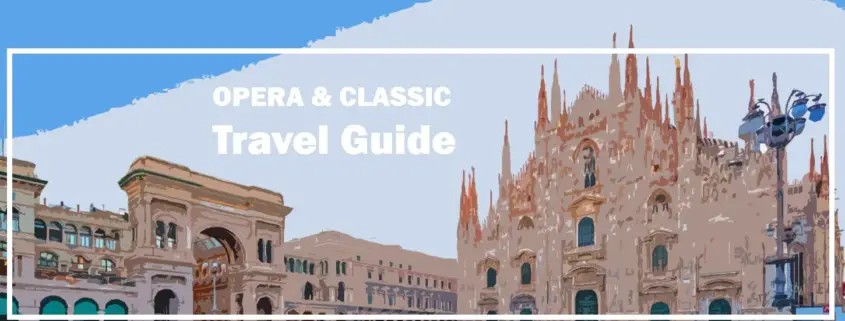


Leave a Reply
Want to join the discussion?Feel free to contribute!